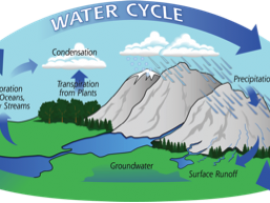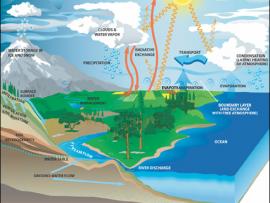Search
Primary tabs
Search
Your search for "model" gave back 31 results.
Primary Topic:
Subtopics:
Type:
Keywords:
Summary:
These original GPM lessons have been developed to teach students about local and global water issues. . They are hands on activities that are done largely outdoors, and which include scientific data collection and analysis and integrate technology.
Primary Topic:
Subtopics:
Type:
Standards:
Keywords:
Summary:
The oceans are mostly composed of warm salty water near the surface over cold, less salty water in the ocean depths. These two regions don't mix except in certain special areas, which creates a large slow current called the thermohaline circulation.
Primary Topic:
Subtopics:
Type:
Keywords:
Summary:
When drought occurs, water supplies for agriculture, industry, and personal use decrease, and people need to find ways to cope with the shortage or leave the area. This series of lesson plans teaches students about the science of droughts.
Primary Topic:
Subtopics:
Type:
Standards:
Keywords:
Summary:
In this lesson, weather data from ground-based and satellite observations are analyzed for a real world application -- to plan a high mountain retreat in Tibet.
Primary Topic:
Subtopics:
Type:
Summary:
Use this iQuest to find out about predictions for the 2019 hurricane season and discover how hurricanes form. You will also learn how NASA satellite data is being used to help predict, monitor, and respond to these deadly storms.
Primary Topic:
Type:
Summary:
Here you will find a variety of resources to assist you in making a visit to a local school, day care center, or after school group. Make a difference in the lives of young people by sharing what you do and the excitement of learning about GPM and Earth.
Primary Topic:
Subtopics:
Type:
Keywords:
Summary:
Faisal Hossain, a civil and environmental engineering professor at Tennessee Technological University, uses NASA satellite data to help Bangladeshi authorities monitor their water resources and prepare for water-related disasters.
Primary Topic:
Subtopics:
Type:
Keywords:
Summary:
This article explains the basics behind the water cycle and includes many good visuals. It provides some good background information about our water cycle as well as providing students with many real-world applications.











